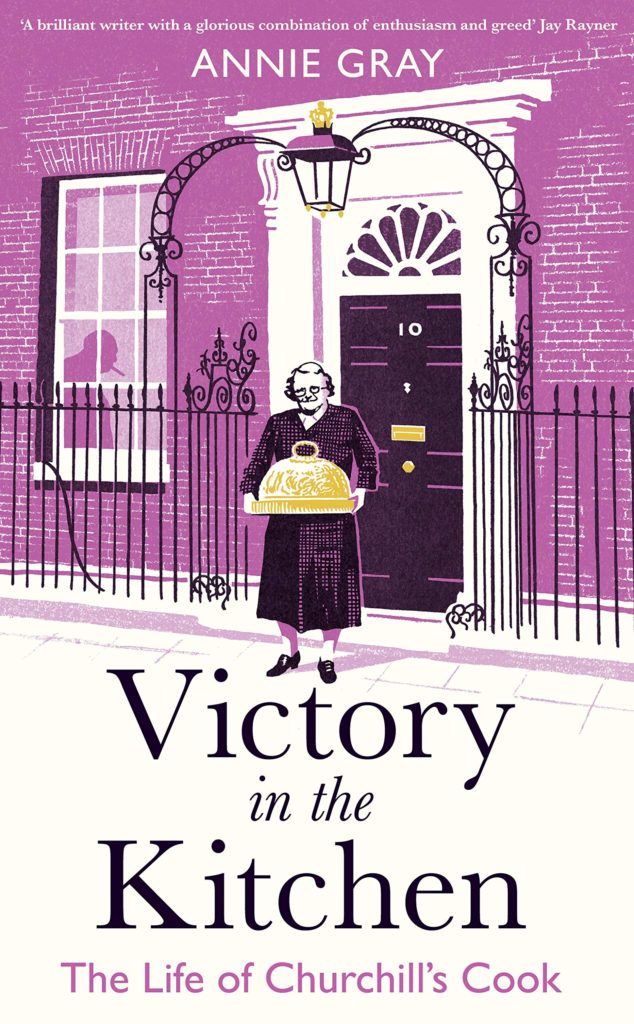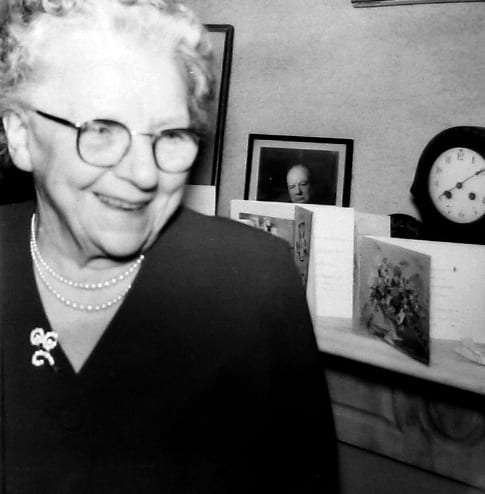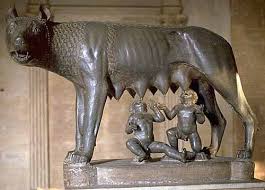“Victory in the Kitchen” by Annie Gray

Victory in the Kitchen is a biography of Winston Churchill’s cook, Georgina Landemere. She worked for the Churchills from 1940 to 1954, the longest serving of any of their domestic servants. She was also particularly close to Clementine and remained in touch, sending each other cards at Christmas, till the late 1970s. Annie Gray, the biographer is an established food historian who has also written books like The Greedy Queen: Eating with Victoria and The Official Downton Abbey Cookbook.
Georgina ( 1862 – 1977) was born during the Victorian period when being in service was acceptable and probably the only reliable option for young girls. She was schooled till such time it was mandatory for children to be educated but as soon as it was legal for her to leave school, she did. She went into service beginning her career as a scullery maid. Georgina’s life span coincides with a fascinating time in food history. During the Victorian Age dishes were still created from scratch and needed time and patience. The Edwardian period had far more elaborate dishes that called upon the skills of the cook to create dishes that were not only magnificent to look at but were fine in taste too. It also coincided with the variety of copper dishes and moulds that were being mass-manufactured from the late 1870s onwards, enabling food to be served that looked nothing like in it’s natural form. During the war years, there was severe rationing and many of the ingredients required to create these elaborate meals were no longer easy to come. It relied upon all the skills and magical expertise of the cook to conjure up fantastic dishes. It was also the time of modern kitchen conveniences such as the gas stove, refrigerators, ice cream machines etc began to be readily available. Post-war years continued to be hard as rationing continued.
Toward the end of Georgina’s lifetime, dishes were no longer required to be elaborate. It was possible to have TV dinners. Recipe books explaining the basics of cooking were popular and a thriving segment for publishers. In fact, Georgina too had written a cookbook, endorsed by Clementine Churchill. It consisted of her tried and tested recipes. Unfortunately she was criticised for putting together recipes that were hard to make. But if her handwritten recipes, some of which have been reproduced in “Victory in the Kitchen”, are read, they are simple instructions easily understood by experienced cooks. With least fuss she is able to share recipes.
Georgina was fortunate to have found work in upper middle class households from her first assignment. She turned out to be an asset in any household that she was employed. She also remained in the good books of former employers who continued to correspond with her and on occasion employ her for an event or two. The Churchills called upon her to create the last meal to be served at 10 Downing Street when Winston Churchill finally quit the place for the last time and a dinner had been organised in his honour to which the young Queen Elizabeth had also attended.
The Churchills were familiar with Georgina’s cooking having sampled it before at dinner parties. So by the time she joined their household as a full time employee, they were known to each other. A factor that helped tremendously given their temperaments. Winston Churchill had a notoriously irascible temperament and could barely recall the names of his domestic staff. He was rude and inevitably used derogatory descriptions while referring to any particular person. He also loved to entertain. Sometimes he would organise large gatherings at very short notice and expect a good meal served, in keeping with his office. He was a firm believer in the informal dinner-party diplomacy. Many cooks left the household as being unable to keep this gruelling schedule. Not Georgina. She was calm and could create a variety of dishes, from the simplest to the most elaborate. Churchill’s clear chicken soup that were the doctor’s orders. So much so that Georgina was one of the few people from his staff who was authorised to use the official bunkers at 10, Downing Street. In fact, Churchill was known to admonish her while hustling her down to the shelter that, ‘I always have to be out after you. If Mr. Hitler gets you, I won’t get my soup!” On VE day, after his victory speech, he thanked Georgina personally for her work, taking her to the balcony to see the cheering crowds.
Victory in the Kitchen is a fascinating account of Georgina’s life. Given that she married a French chef, twenty-three years her senior, that the book also becomes a wonderful excuse for Annie Gray to investigate he food histories of France and England and the transformation that these cuisines underwent in the late-nineteenth and early twentieth centuries. Using the life of Georgina as a springboard to delve into the past to understand the position of women, the impact of the world wars on women, their employment, and of course the evolution of food tastes is well out together by Annie Gray. Surprisingly though Georgina’s name is missing from the book cover given how much effort the author has put in rescuing the history of a “cook” who could otheriwse have easiy been forgotten. Nevertheless except for this minor glitch Victory in the Kitchen is an excellent book.






